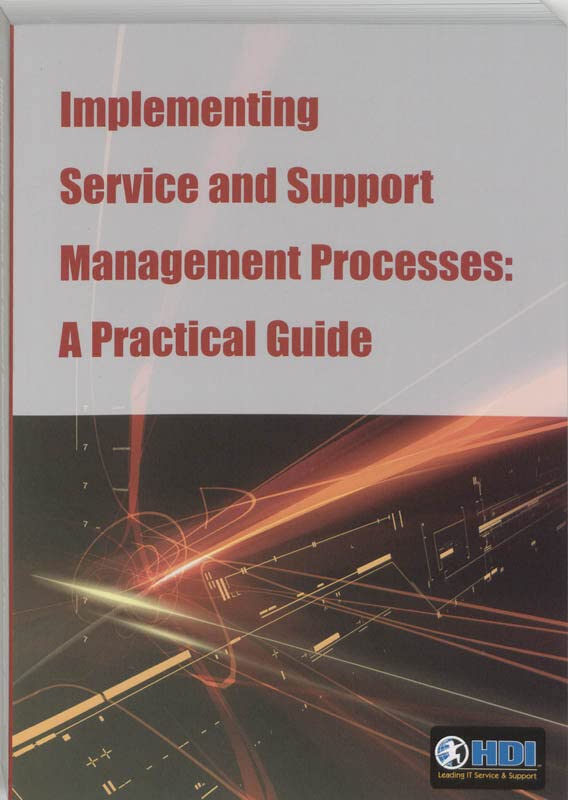Guided After-Action Report
Guided After-Action Report (AARs) represent the advancing demands for IT Service Management (ITSM) and Security Operations Management (SecOps). The practice of conducting After Action Reports (AARs) has elevated as a key foundation for continuous process improvement.
In this article we walk you through the comprehensive guide to a well-executed AAR. If you care about your job, you care to not make the same mistake twice.
For seasoned ITSM professionals, AARs represent an invaluable tool for refining service delivery and fortifying security measures. This comprehensive guide embarks on a journey to demystify the process of conducting effective AARs within the realms of ITSM and SecOps. By offering a meticulous roadmap and illuminating insights, this article empowers you to harness the potential of AARs to enhance performance, heighten adaptability, and foster a culture of perpetual improvement. From understanding when to initiate an AAR to orchestrating meetings and meticulously documenting outcomes, this guide equips you with the knowledge needed to undertake impactful AARs and steer your organization towards an era of proactive learning and growth.
Conducting Guided After-Action Reports:
As a seasoned IT Service Management (ITSM) professional, the practice of conducting After Action Reports (AARs) plays a pivotal role in enhancing service delivery and fortifying security measures. This article presents a detailed process for executing effective AARs in both ITSM and Security Operations Management (SecOps), while also offering insights into facilitating successful AAR meetings.
When to Conduct a Guided After-Action Report
ITOM:
- Disaster Recovery: Following the restoration post disaster activity.
ITSM:
- Major Incidents: Following the resolution of major incidents impacting service delivery. Healthcare IT Example Process.
- Service Outages: After significant service disruptions or outages.
- Service Improvement Initiatives: Post implementation of service enhancements or changes. FEMA US Example Process.
- Service Transition: After the introduction of a new service or application.
SecOps:
- Governance, Risk and Compliance: After Events or exercises.
- Security Incidents: In the aftermath of handling emergency management, security breaches, incidents, or attacks.
- Vulnerability Assessments: Following assessments aimed at identifying system vulnerabilities. Kaiser Vulnerability Process Example.
- Penetration Testing: After the simulation of attacks to evaluate security measures.
- Security Drills/Exercises: After conducting simulations to assess security response readiness.
Process for Conducting a Guided After-Action Report:
Preparation:
- Identify Event/Incident: Begin by pinpointing the specific event or incident warranting an AAR.
- Form AAR Team: Assemble a diverse team comprising essential stakeholders, process owners, and involved participants.
- Gather Data: Collate relevant incident logs, communications, and documentation.
Agenda Planning:
- Introduction: Establish the context and the purpose behind initiating the AAR.
- Event Overview: Briefly encapsulate the event/incident and its consequential impact.
- Goals/Objectives: Clearly define the desired outcomes you intend to achieve through the AAR.
- What Worked Well: Highlight the strategies and aspects that contributed to successful outcomes.
- Areas for Improvement: Delve into the challenges faced and identify areas with potential for enhancement.
- Lessons Learned: Share profound insights garnered from the event/incident.
- Recommendations: Propose (SMART) Specific, Measurable, Actionable, Realistic, and Time-bound suggestions to amplify future performances.
- Next Steps: Provide a roadmap for implementing recommendations and assign responsibilities.
Meeting Facilitation:
- Positive Environment: Cultivate an environment that encourages constructive discussions, devoid of blame.
- Engagement: Stimulate open dialogues and encourage active participation from all attendees.
- Agenda Adherence: Ensure discussions align with the predefined agenda.
- Foster Collaboration: Welcome diverse perspectives to foster holistic insight.
- Action-Oriented: Maintain focus on generating practical, actionable recommendations.
Documenting the Guided After-Action Report
- Minutes: Designate someone to diligently record comprehensive meeting minutes.
- Key Points: Capture successes, areas for improvement, lessons learned, and recommendations.
- Action Items: Document agreed-upon action items and assign responsibilities with specified deadlines.
- Data Backing: Augment the report with pertinent data, metrics, and evidence.
- Templates: Opt for standardized AAR templates to ensure consistency across reports.
Follow-Up and Implementation:
- Review Minutes: Distribute the documented AAR to participants for review and validation.
- Action Items: Allocate responsibilities and establish clear deadlines for follow-up actions.
- Feedback Loop: Share AAR outcomes with relevant teams to disseminate insights.
- Implement Changes: Execute recommended actions to enhance operational processes.
Continuous Improvement following Guided After-Action Report
- Iterative Process: Integrate AARs as an ongoing practice within the ITSM and SecOps lifecycle.
- Feedback Incorporation: Leverage AAR outcomes to refine processes, bolster security measures, and elevate performance standards.
- Training: Implement training initiatives based on lessons learned to enhance skill sets.
- Culture Building: Cultivate a culture of perpetual learning, accountability, and unwavering commitment to improvement.
Resources
- After-Action Review Library – National Policing Institute
- Cybersecurity and Infrastructure Security Agency: Physical Security Convergence Action Guide | CISA
- Essentials of GRC and cybersecurity — How they empower each other (thehackernews.com)
- Imperative: Governance Risk Compliance – Dawn C Simmons
- Incident management Glossary | Atlassian
- US National Institute Of Health- “Application impact analysis: a risk-based approach..” for the Journal of Business Continuity Emergency Planning by Beth Epstein and Dawn Khan (Simmons)
- The Digital Trust Leader | ISACA
Template: Guided After Action Report
Conclusion:
The essence of After-Action Reports lies in their capacity to facilitate learning, adaptability, and future performance enhancements. By conscientiously conducting thorough AARs within the domains of ITSM and SecOps, you become a driving force behind the construction of a resilient IT environment while simultaneously nurturing a proactive approach to security management. Embrace the lessons, amplify the strengths, and emerge more adept from each AAR.

Implementing Service And Support Management Processes: A Practical Guide
-
Getting Started
- AI: ServiceNow Virtual-Agent Chatbot
- BMC Remedy ITSM Reference
- Burp Suite Professional & Web Security Process
- COE for Human Resources
- Conduct A Windows-Security Scan
- Employee Journey Management ServiceNow
- Getting Started: Engagement Manager
- Introduction to Knowledge Management
- Knowledge Categorization "Find-ability"
- One-IT: Effective Ticket Handling
- Productivity Tips for Knowledge-Users
- Productivity: Service Operations Workspace
- Quick Start Guide
- Service Catalog Order Guides
- Your Next Steps
-
- Advanced Program Management
- AI: ServiceNow Virtual-Agent Chatbot
- Artificial Intelligence A-Z Glossary
- Business Process Optimization Reviews
- Category Hierarchy and Tabs Layout
- Employee Journey Management ServiceNow
- GE Change Acceleration Process
- GRC Managed Risk
- Overview: Employee Center Pro
- Productivity: Service Operations Workspace
- Proper Ticket Handling Imperative
- Public Sector Digital Services
- RIDAC: Strategic Portfolio Management
- SOX Control-Management and Attestation
-
- Articles coming soon
-
FAQs
- Best of ServiceNow Vancouver
- Chat GPT FAQS
- DevOps & Change Velocity
- Enhancing End-User Service Experience
- FAQs: Governance Risk Compliance
- How-To Import ServiceNow Stories 🚀
- Knowledge Categorization "Find-ability"
- Role of CMDB-Management Service-Owner
- Service Catalog Process FAQs
- ServiceNow IRM SOX FAQs
- Strategic Portfolio Management FAQs
- Ticket Handling Infographic FAQs
- Understanding Clop Ransomware Mitigation
- Vulnerability Response Workspace Module
- Washington ESC or Knowledge Portal?
-
- AI & GRC Defense Against Security-Data Breach
- AI and Improved Knowledgebase-Search
- AI Revolutionizes Service Management
- AutomatePro AutoTest Custom-Testing
- AutomatePro AutoTest: Getting Started
- Best of ServiceNow Vancouver
- CMDB Health Dashboard
- Comparing ServiceNow-Strategic-PM to Microsoft-PM
- Demystifying Taxonomy Categorization
- DevOps & Change Velocity
- Efficient Workday to ServiceNow Integration
- Email-to-Incident is Costly Inefficiency
- Enhancing End-User Service Experience
- Financial Services Operations
- Gamifying ITSM Excellence
- GRC Industry Reference Matrix
- Introducing Security Incident Response
- Role of CMDB-Management Service-Owner
- Service Catalog Process FAQs
- ServiceNow Executive Reporting Approaches
- ServiceNow Virtual Agent Chatbot
- SPM Gantt Chart Presentation
- Strategic Portfolio Management FAQs
- Vulnerability Response Test Plan
- Vulnerability Response Workspace Module
- Washington ESC or Knowledge Portal?
- Show Remaining Articles11 Collapse Articles
-
Glossary Reference
-
Blog
- 2021: VP Harris Inauguration Elevates Diversity and Executive Leadership
- 5-Star ITSM Solutions
- 5-Step Policy-Compliance Risk Management
- AI & GRC Defense Against Security-Data Breach
- AI Revolutionizes Service Management
- AI: Knowledge Centered Support
- ChatGPT Ethics and FTC
- CMDB Corporate Governance for Publicly Held Companies
- Community Crisis Resource Reference List
- Covid Cyber Employment Fraud: $Millions in Job Fraud, $Billions in Unemployment Fraud. Recruiters and Jobseekers Paradigm shift
- Does Post Covid Demand, "Evolve or Fold" Data Strategy?
- Financial Services Operations
- Freshwork's Multichannel vision for FreshService (ITSM)
- Gamifying ITSM Excellence
- GRC Industry Reference Matrix
- Imperative: Governance Risk Compliance
- Jobs n Career Success: Employment News
- Microsoft Teams Tripping Transcription Tenancy.
- Predictive Intelligent Situational Awareness
- Remedy to ServiceNow Migration
- Review and Approve Knowledge
- ROI: Demand AI Service Management
- Top Trends in Project Management
- Uber's Call Center Security Social Engineering Massive System Breach
- Vulnerability Remediation RACI
- Walk Up Experience- Design-To-Deliver
- World Talent Economy Forum on Global Competitiveness
- Show Remaining Articles12 Collapse Articles
-
Healthcare
-
Workday
-
Network Connectivity Solutions
-
Business Process Methodologies

